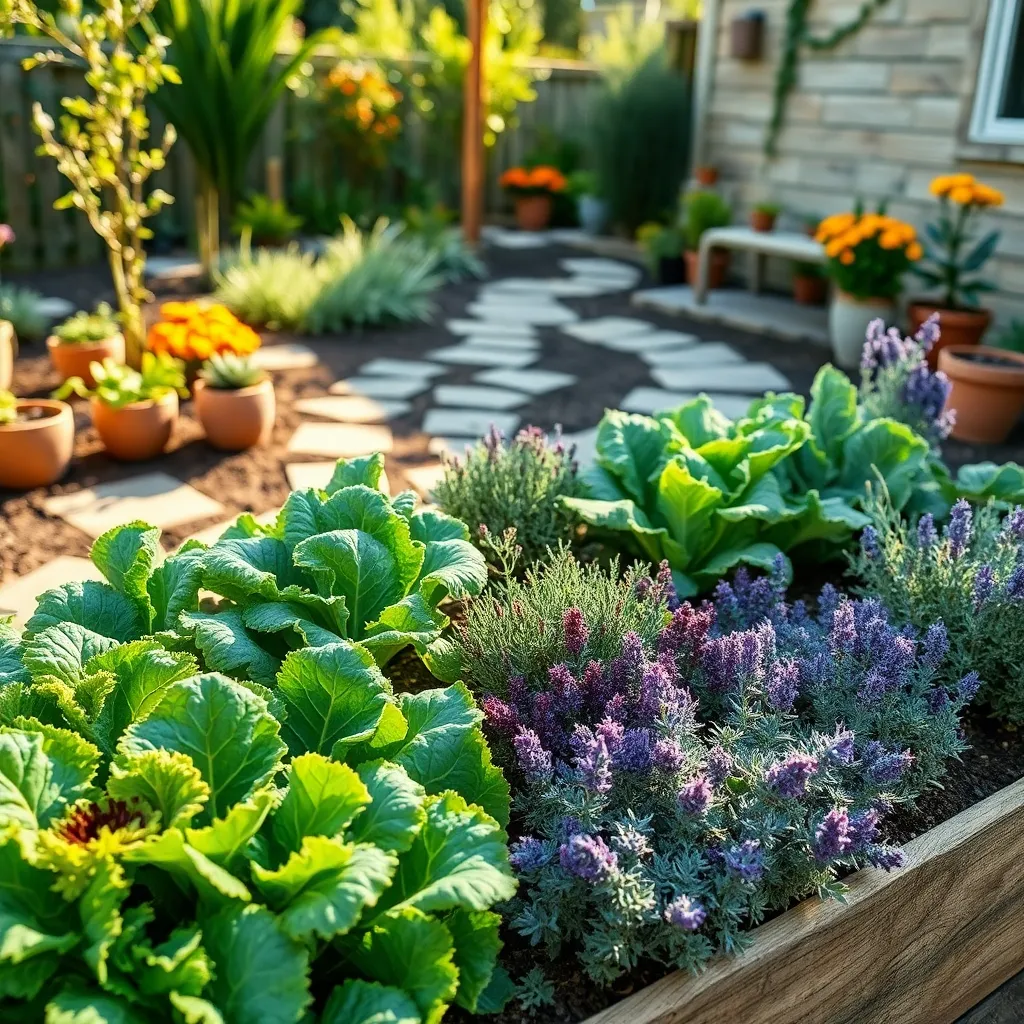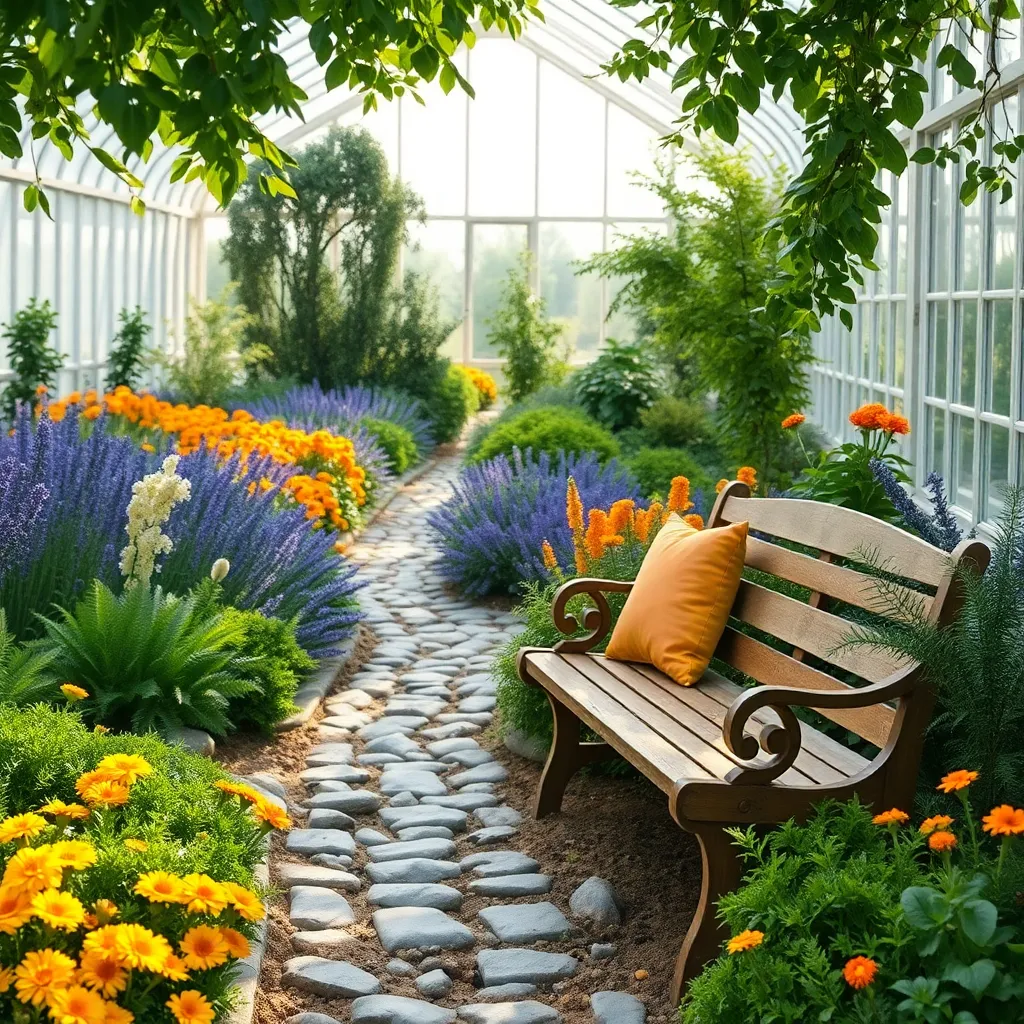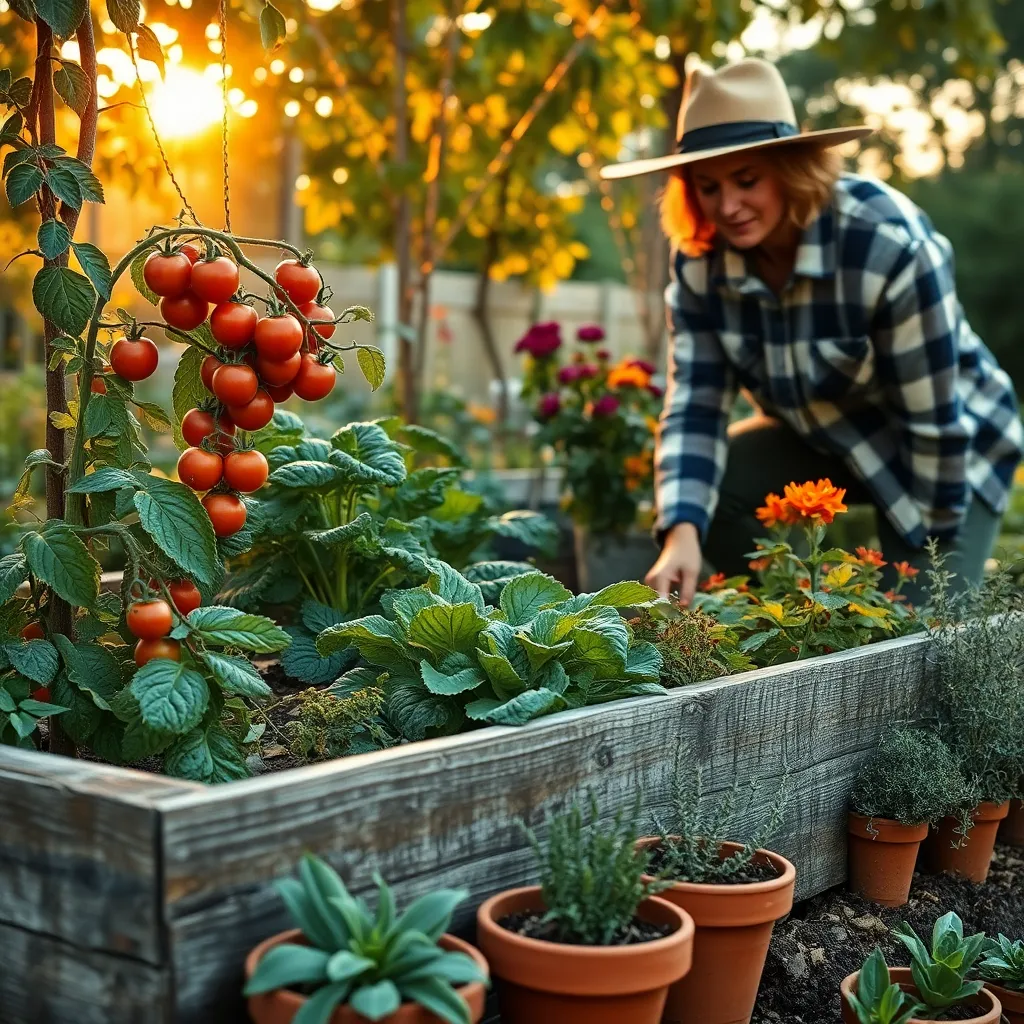Embarking on the journey of planning your garden layout is a delightful step into the world of gardening that promises both joy and reward. Whether you’re a novice just beginning to explore the wonders of plant life or a seasoned gardener looking to refine your techniques, understanding how to effectively plan your garden space is crucial. A well-thought-out garden layout not only maximizes space and resources but also enhances the beauty and productivity of your garden, making it a haven for relaxation and enjoyment.
For beginners, the process of planning might feel a bit daunting, but fret not—every garden, like every gardener, is unique and full of potential. You’ll discover how to evaluate your space, select the right plants for your environment, and create a layout that suits your lifestyle and aspirations. Seasoned gardeners will find this a perfect opportunity to revisit fundamental principles, ensuring that even the smallest adjustments can lead to thriving plants and a more harmonious garden experience.
In the following sections, we’ll walk you through practical steps and creative ideas to design a space that’s both functional and aesthetically pleasing. You’ll gain insights into the art of companion planting, learn how to make the most of your available light, and explore innovative ways to incorporate vertical gardening into your plan. By the end of this article, you’ll feel equipped and inspired to transform your garden space into a flourishing extension of your home, no matter your level of experience.
Choosing Your Garden Space

When choosing your garden space, start by assessing the amount of sunlight the area receives. Most vegetables and flowers thrive in full sun, requiring at least six hours of direct sunlight each day.
Consider the proximity to water sources, as easy access makes regular watering more convenient. Plants like tomatoes and cucumbers need consistent moisture, so positioning them near a water source can be beneficial.
Next, evaluate the soil quality, as healthy soil is crucial for plant growth. Conduct a simple soil test to check for pH and nutrient levels, aiming for a slightly acidic to neutral pH between 6.0 and 7.0 for most plants.
For those with limited space, explore vertical gardening or container gardening options. These methods are ideal for growing herbs like basil and mint, which flourish in well-drained, fertile potting soil.
Advanced gardeners might experiment with companion planting to maximize space and reduce pest issues. Combining plants like marigolds with tomatoes can deter pests naturally, offering a sustainable gardening practice.
Designing a Functional Layout

Once you’ve chosen your garden space, the next step is to design a functional layout that maximizes productivity and aesthetic appeal. Start by considering the sunlight exposure in different parts of your garden to determine which plants will thrive where. Light-loving plants such as tomatoes and peppers need a spot that receives at least six hours of direct sunlight daily, while shade-tolerant varieties like lettuce and spinach can flourish in less sunny areas.
Mapping out the placement of your plants is crucial for both accessibility and growth. Ensure taller plants are positioned on the north side of the garden so they don’t cast shade over shorter plants. Additionally, grouping plants with similar water needs together can help streamline your irrigation process and conserve resources. For example, keep drought-tolerant herbs like rosemary and thyme together, separate from moisture-loving crops like cucumbers and melons.
Incorporate paths or stepping stones to allow easy access to your plants for maintenance and harvesting. This not only helps keep your garden tidy but also prevents soil compaction around plant roots, which can hinder growth. Consider using mulch between paths to suppress weeds and retain soil moisture, adding to the overall health of your garden.
For those with smaller spaces, vertical planting can be a game-changer, providing more room for crops in limited areas. Utilize trellises or vertical planters to grow vining plants like peas or beans, freeing up ground space for other crops. Advanced gardeners might explore companion planting techniques, where plants like basil can be grown alongside tomatoes to repel pests and improve growth. This symbiotic relationship not only enhances plant health but also increases the yield of your garden.
Understanding Plant Spacing Basics

Proper plant spacing is crucial for creating a thriving garden, as it allows each plant room to grow to its full potential. Adequate space between plants helps prevent competition for resources such as sunlight, water, and nutrients.
When planning your garden layout, consider the mature size of each plant to determine the spacing requirements. For instance, a tomato plant typically needs about 18-24 inches between each plant, while carrots can be spaced as close as 2-3 inches apart.
To optimize your garden’s productivity, use a grid or a string to mark where each plant will go. This method ensures you maintain consistent spacing, leading to a more organized and efficient garden.
It’s also important to consider the type of root system each plant has, as this affects how much space they need underground. Plants with extensive root systems, such as squash, should be given more room to prevent overcrowding.
For those with limited garden space, consider planting vertically by using trellises or cages, which can help manage space efficiently. Vertical gardening allows for more plants in a smaller area and increases air circulation, reducing the risk of disease.
Incorporating Paths and Borders

Incorporating paths and borders into your garden not only enhances its aesthetics but also improves accessibility and plant care. A simple way to start is by using gravel or stepping stones to create paths that allow you to reach all areas without compacting the soil. This prevents soil compaction, which can hinder root growth and water absorption.
Paths can also help manage foot traffic, reducing wear and tear in areas prone to becoming muddy. Consider laying a base of landscape fabric beneath your paths to prevent weed growth and keep maintenance low. Adding mulch or wood chips around stepping stones can provide a softer look and feel, while still serving as a deterrent for weeds.
Borders are another crucial element in garden design, helping to define spaces and contain plants. For beginners, using simple materials like bricks or wooden logs can create effective borders that are easy to install. Advanced gardeners might explore using living borders, such as low-growing hedges or perennial plants, which can add a lush, natural feel to the garden.
When planning your borders, think about how they can enhance the microclimate for the plants within them. Brick or stone borders can absorb heat, providing a warmer environment for heat-loving plants, while wooden borders can add a rustic charm. Ensure that all materials used are weather-resistant to prolong their lifespan and reduce the need for frequent replacement.
Adapting to Seasonal Changes

As the seasons change, so do the needs of your garden. In spring, focus on planting hardy annuals and perennials that thrive in cooler temperatures. During the summer months, ensure that your garden is equipped with a reliable irrigation system. Water deeply and less frequently to encourage root growth and drought resistance.
In autumn, start preparing your garden for the coming winter months. This is the time to plant bulbs for spring blooms and to prune back perennials. Mulching in late fall can protect plant roots from harsh winter conditions. Use organic materials like shredded leaves or straw, which will break down and enrich the soil over time.
Winter offers an opportunity to plan and reflect on your garden’s layout and plant choices. In colder climates, consider covering your garden beds with row covers or cloches to extend the growing season. Choose cold-tolerant plants such as kale and spinach for winter harvesting. These steps can help maintain productivity and keep your garden thriving year-round.
For advanced gardeners, experimenting with season extenders can yield rewarding results. Use greenhouses or cold frames to start seedlings early and protect them from unexpected frosts. By paying attention to microclimates within your garden, you can optimize plant placement and improve yields. Understanding your garden’s unique conditions will allow you to adapt more effectively to seasonal changes.
Conclusion: Growing Success with These Plants
In exploring the art of garden layout planning for beginners, we’ve uncovered five key relationship concepts vital for nurturing both flourishing gardens and thriving partnerships. First, understanding the importance of communication mirrors the need to assess soil conditions—laying a solid foundation ensures growth. Second, the significance of balance in plant placement parallels finding harmony in shared responsibilities. Third, patience in waiting for plants to bloom reflects the virtue of allowing relationships to mature over time. Fourth, adaptability in redesigning garden layouts resonates with the flexibility required in evolving relationships. Lastly, consistency in care, much like regular watering, is essential for sustaining both gardens and connections.
As a practical next step, take a moment to discuss with your partner how these principles can be applied to your relationship. This conversation could be the first seed planted toward a more intentional and fulfilling connection.
Remember, every flourishing garden begins with a well-thought-out plan, just like every successful relationship. Bookmark this article as your guide to nurturing both your garden and your partnership. As you cultivate these skills, look forward to a future of blossoming relationships, marked by understanding, growth, and shared joy.

